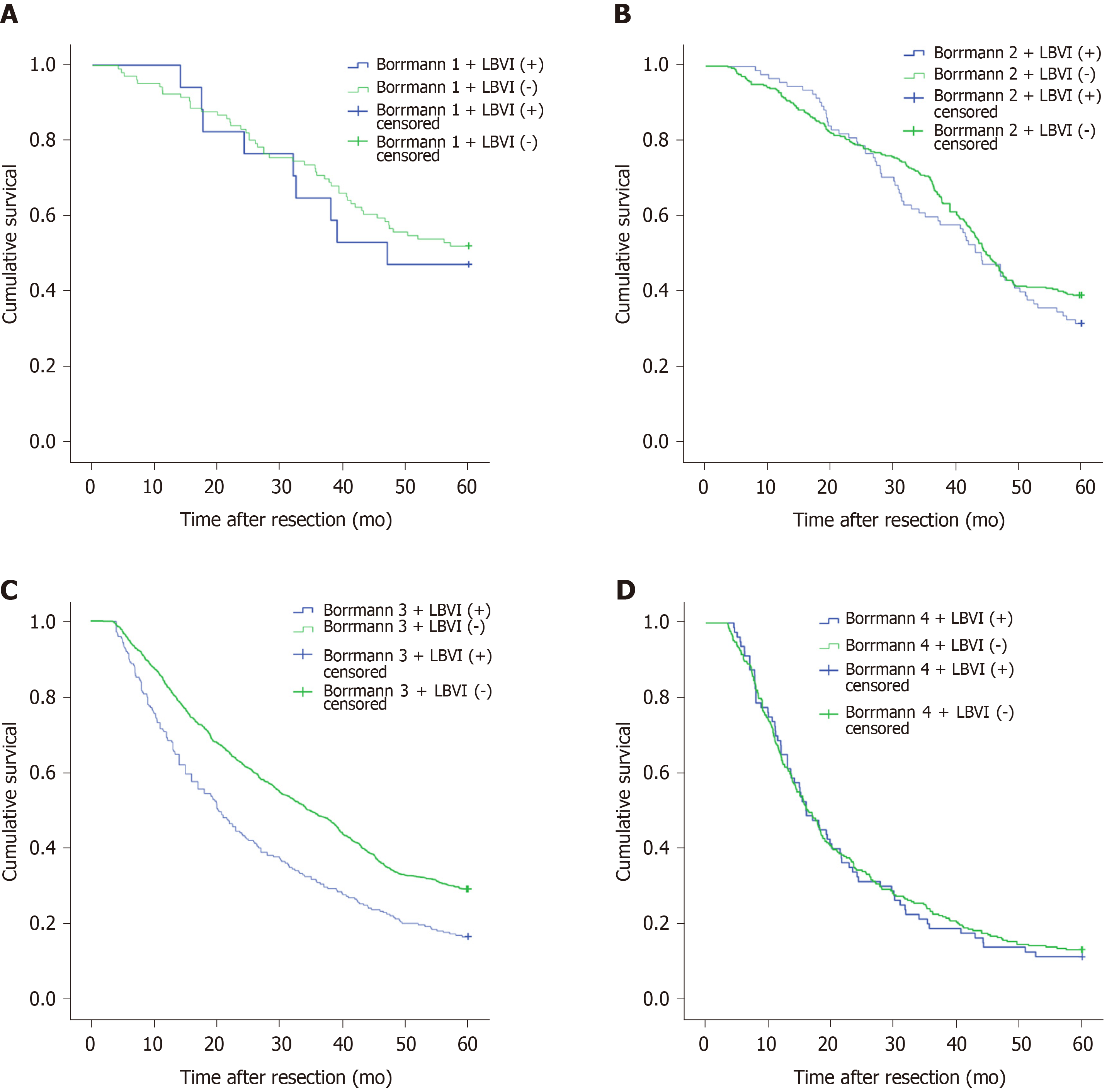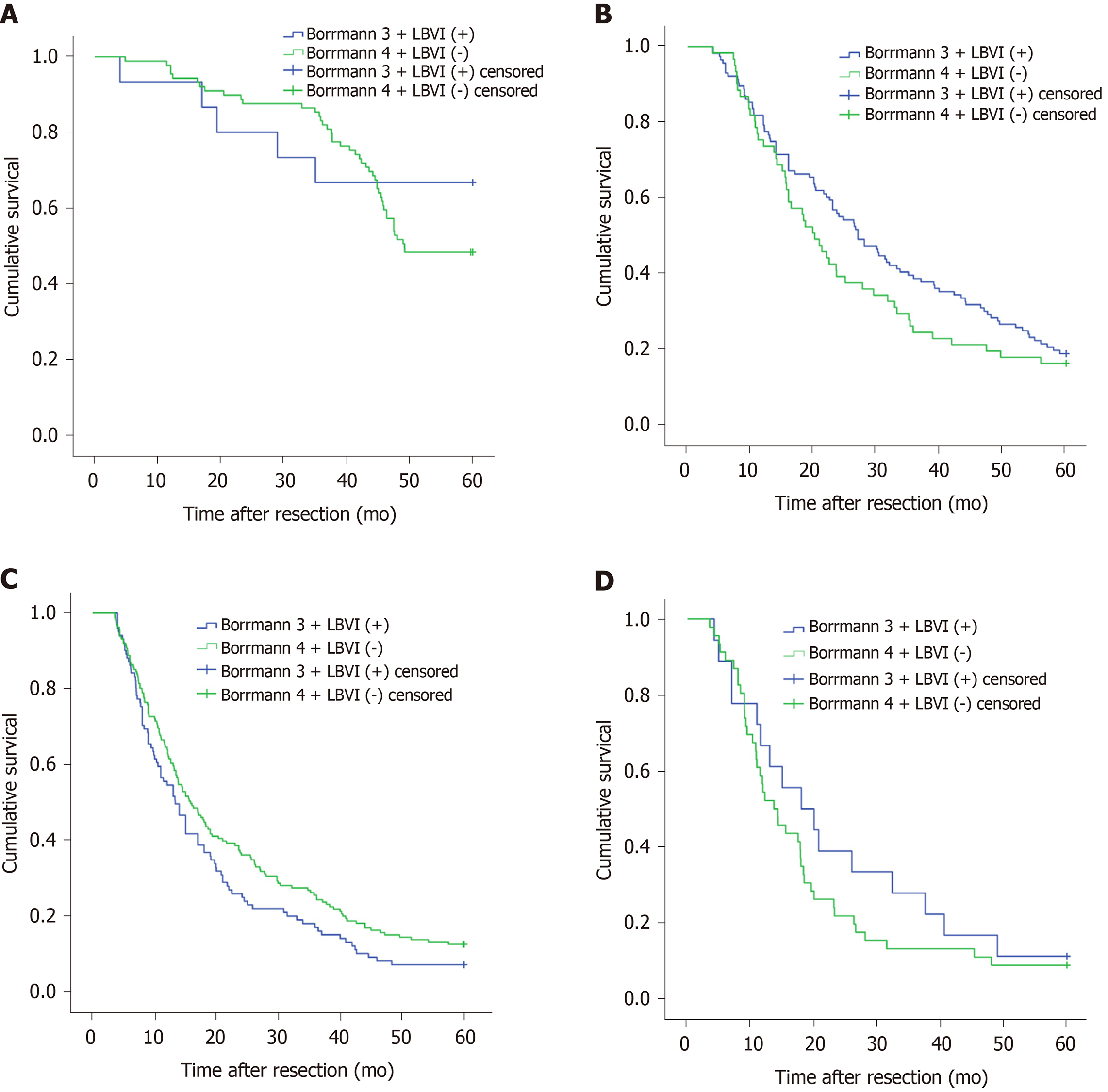Copyright
©The Author(s) 2020.
World J Gastrointest Oncol. Sep 15, 2020; 12(9): 992-1004
Published online Sep 15, 2020. doi: 10.4251/wjgo.v12.i9.992
Published online Sep 15, 2020. doi: 10.4251/wjgo.v12.i9.992
Figure 1 Analysis of 5-year survival rate of 2604 cases of advanced gastric cancer based on Borrmann type and lymphatic and/or blood vessel invasion (LBVI).
A: Borrmann tupe; B: LBVI status.
Figure 2 Effect of Borrmann type combined with lymphatic and/or blood vessel invasion (LBVI) status on long-term survival of patients with advanced gastric cancer.
A: Borrmann type I + LBVI status; B: Borrmann type II + LBVI status; C: Borrmann type III + LBVI status; D: Borrmann type IV + LBVI status.
Figure 3 Prognostic impact of incorporating lymphatic and/or blood vessel invasion (LBVI) status into Borrmann types III and IV advanced gastric cancer.
A: Borrmann type III + LBVI (+); B: Borrmann type IV + LBVI (-).
Figure 4 Prognostic significance of Borrmann type with lymphatic and/or blood vessel invasion (LBVI) status among different pT stages of advanced gastric cancer.
A: pT2; B: pT3; C: pT4a; D: pT4b.
Figure 5 Prognostic significance of Borrmann type with lymphatic and/or blood vessel invasion (LBVI) status among advanced gastric cancer at different locations.
A: Upper third; B: Middle third; C: Lower third; D: Overlapping tumors.
- Citation: Zhai Z, Zhu ZY, Zhang Y, Yin X, Han BL, Gao JL, Lou SH, Fang TY, Wang YM, Li CF, Yu XF, Ma Y, Xue YW. Prognostic significance of Borrmann type combined with vessel invasion status in advanced gastric cancer. World J Gastrointest Oncol 2020; 12(9): 992-1004
- URL: https://www.wjgnet.com/1948-5204/full/v12/i9/992.htm
- DOI: https://dx.doi.org/10.4251/wjgo.v12.i9.992













